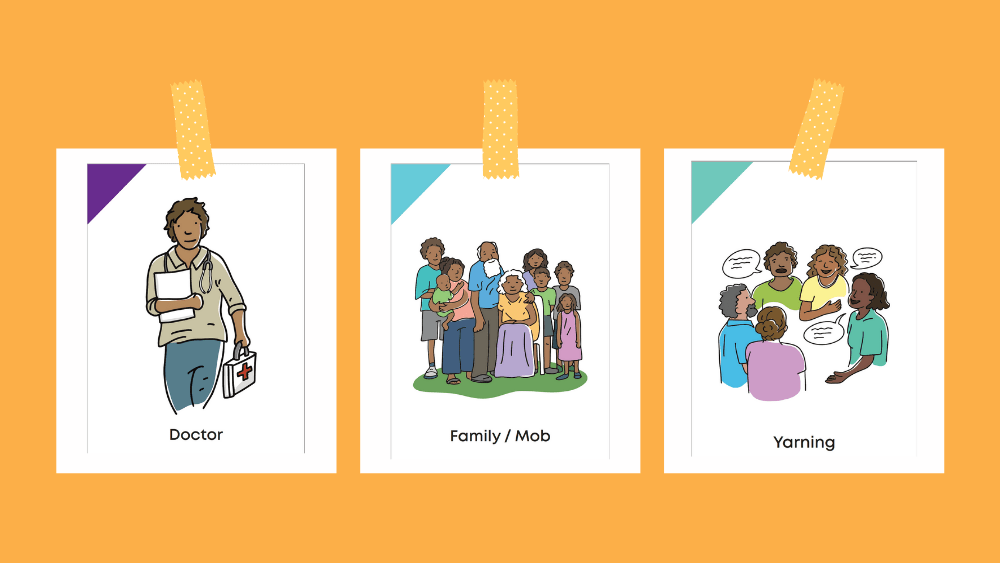The small cards of hope for Indigenous people living with Dementia
A new series of specific, simple cards has been launched during NAIDOC Week 2021 that aims to help Indigenous people living with dementia to communicate about themselves and activities they are involved with. First Nations people in Australia experience dementia at a rate of three to five times that of the general population, and at an earlier onset age.
Created by Dementia Support Australia – a service led by HammondCare, a Christian-based aged care provider – the packs of 58 cards were designed by Dagoman woman and professional illustrator, Samantha Campbell.
Based in Darwin and specialising in Indigenous resources such as children’s books and animated videos, Campbell was pleasantly surprised to be asked to design the Dementia cards.
“To make it simple and easy for a person with Dementia to view was a bit of a challenge,” said Campbell, who was given guidance about the sorts of colours and images which her intended audience respond best to.
“These cards will provide the ability to communicate in a way that respects both the person and their culture …” – Colm Cunningham
DSA developed the cards idea because, as director Associate Professor Colm Cunningham explained: “The health and wellbeing of Aboriginal and Torres Strait Islander people is strongly based on connection to Country, community, family and culture.”
“These cards will provide the ability to communicate in a way that respects both the person and their culture with families, staff in aged care services and our DSA consultants.”
Glad to be able to team up with a Christian organisation like HammondCare, Campbell explained how her mum’s strong faith helped shape her own – and her outlook on serving God through her artwork.
“Mum guided me along the way of putting God first in everything you do and being led by the Spirit. [I try] to do that and say to Jesus, ‘What do you want me to do with my skills? I can use it anyway you want.’ … So I don’t let fear in and I try to be courageous about the opportunities that come up, because you never know where they might take you.”
Campbell talked Eternity through six of her designs for the cards created to benefit First Nations peoples living with Dementia.
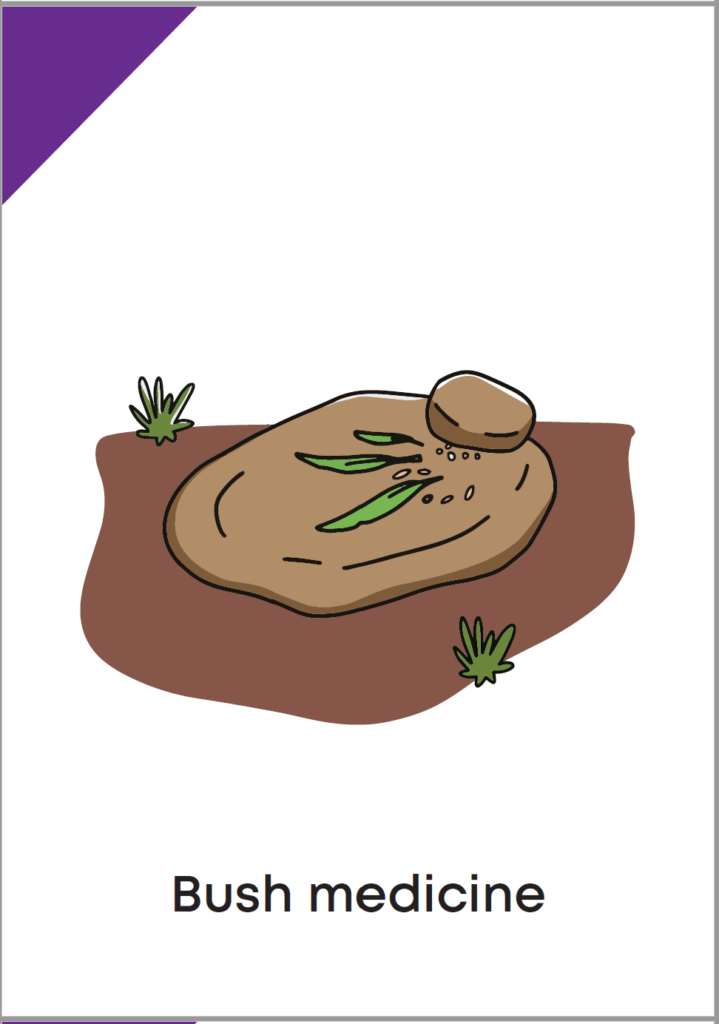
Bush medicine
“The rock and the grinding stone are used for making certain things like natural ointments, with things from the bush. This is a traditional way to make things like rubs or something you can put in your tea for healing … This is better to get the message across than a Western-type pill jar. This is more appropriate, especially for a mob out in the communities. It is hard to have one picture for so many different areas around Australia but even people who are not as traditional – who have grown up in town – should recognise the grinding stone and that it represents medicine.”
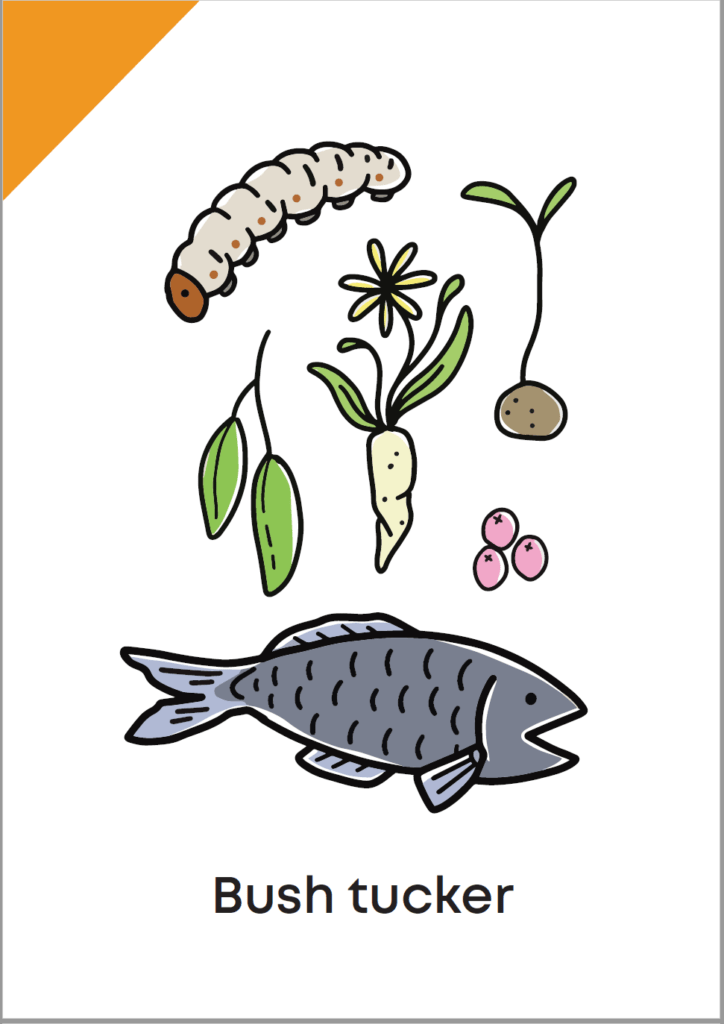 Bush tucker
Bush tucker
“Again, this was hard because of all the different areas in Australia. Some of the things [on the card] are from the top end like the bush potato. Most areas would know fish. The yam is more southern; I tried to put a mix in there from all areas around Australia, so at least one of them is recognisable for each reason.”
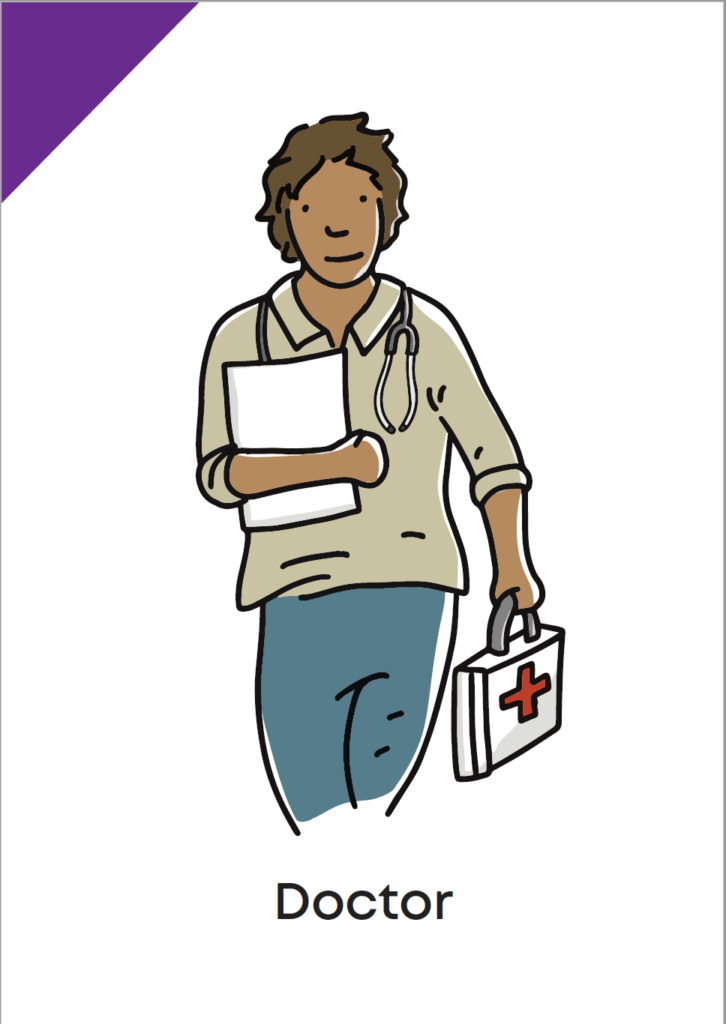 Doctor
Doctor
“I tried to make the doctor friendly and approachable by putting him in a casual shirt. If I put him in a white collared shirt, that can be quite confronting some times. Some Aboriginal people see the hospital as a place they won’t come back from. Where you go to die, pretty much. So having a man in a white collared shirt can be scary, in a way. And bush doctors, they wear normal casual shirts too. I tried to make sure it wasn’t too stereotypical in the sense of a Western doctor but tried to make it more suitable to what a bush doctor would wear if they jumped on a plane and visited a community.”
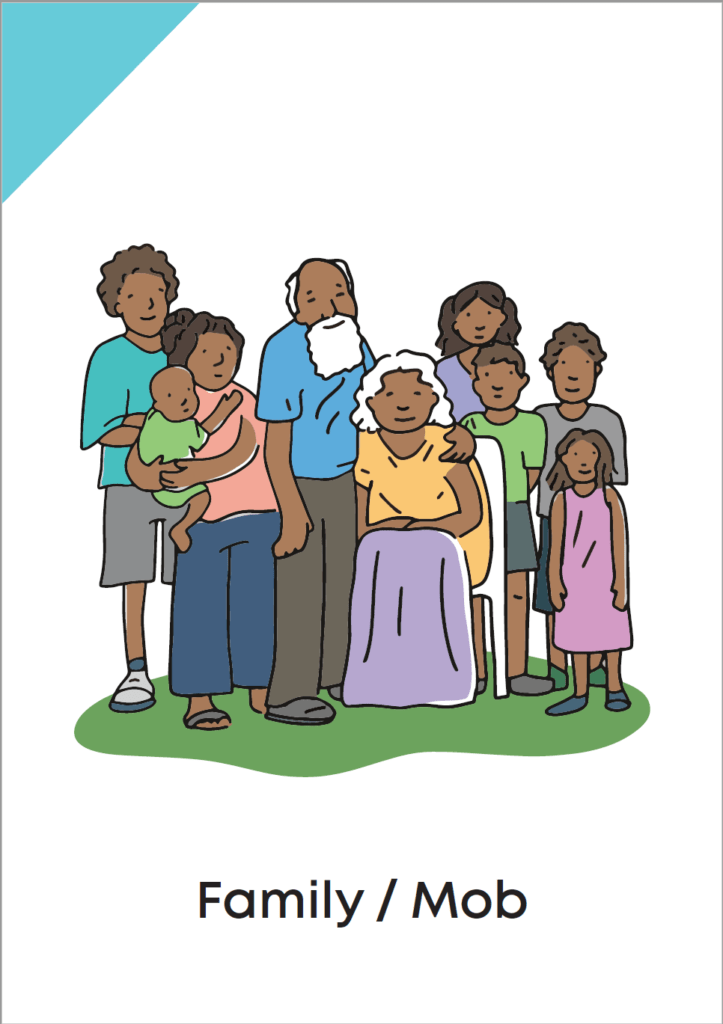 Family/mob
Family/mob
“The main one for that was to make the nanna at the front, and in the middle, because she seen as the boss and the most important. Obviously, all families are different but the majority of people I know – and as an Aboriginal person myself – they understand that the nannas are the boss of the family. Most respected. I can’t talk for all Aboriginal people but I know it is one of the more common themes of family/mob … Obviously, there is extended family around her.”
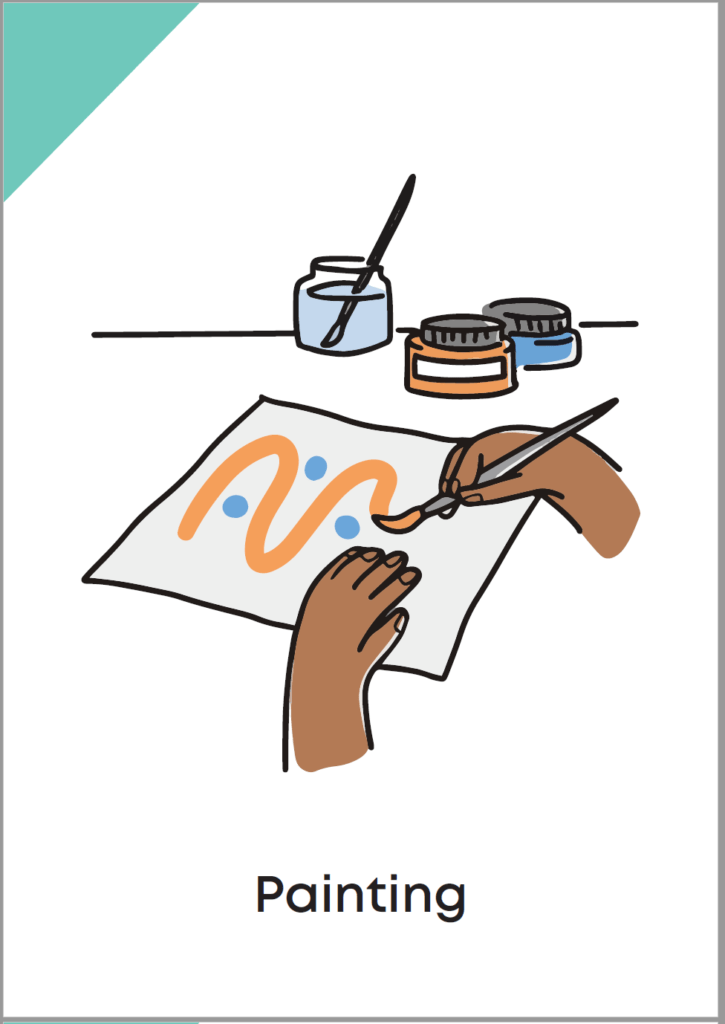
Painting
“Obviously, again, all areas of Australia are different. We’ve got Central Australia which are more dots and circles; other areas – like up here in Darwin – are stripes and line work. I didn’t want to make it one or the other, so I did a squiggle and dots to make it an ‘all rounder’ … Even though some people just use a stick [to paint], I thought I’d use a paint brush as most are familiar with that, even if they are out remote.”
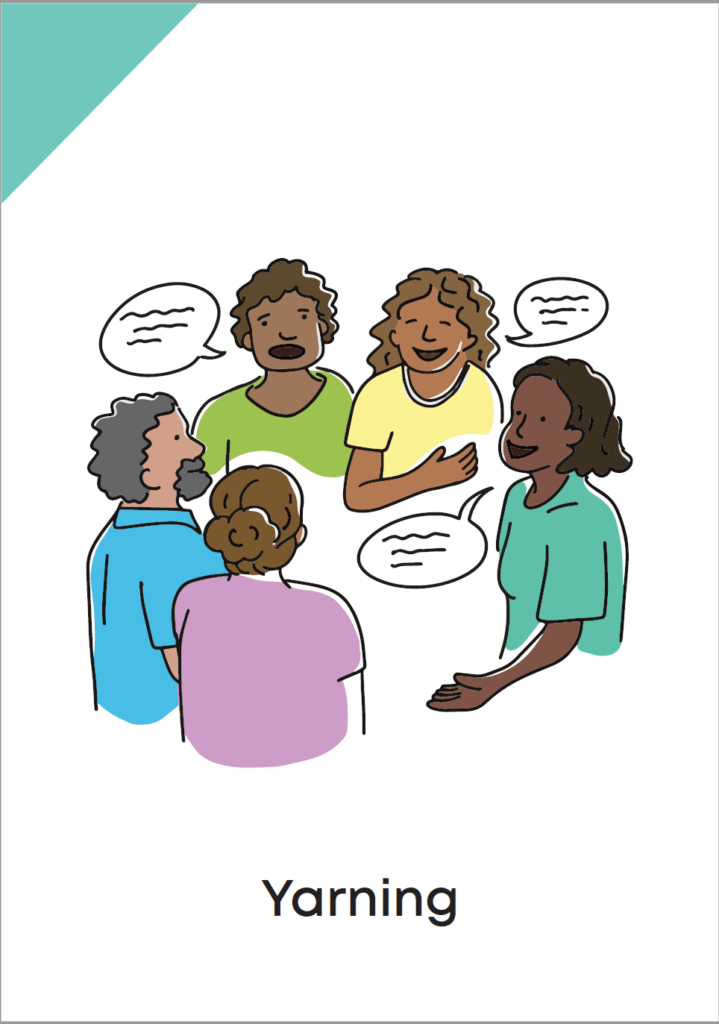
Yarning
“There are a mixture of people and different age groups. Just getting together and talking as a group; having time for that … and taking time out for it. That’s what I was thinking about when I was drawing that illustration. Having time for each other. Talking slow. No rush.”
